The first galaxies: what we know and what we still need to learn
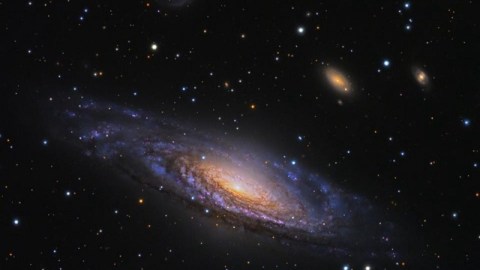
We haven’t found the truly “first” ones yet, but we’re not just on our way; we’re almost there.
“For the first time we can learn about individual stars from near the beginning of time. There are surely many more out there.” –Neil Gehrels
When you think of a galaxy today, you think of something like the Milky Way: hundreds of billions of stars, grand spiral arms, loaded with gas and dust, and ready to form the next generation of stars. Such a behemoth exerts a tremendous gravitational pull acting on everything else nearby. And you will know this galaxy from afar by the starlight streaming out of it, which travels unimpeded through the transparent Universe. But because what we know as our Universe began with the Big Bang some 13.8 billion years ago, we know that galaxies weren’t always this way. In fact, if we look back far enough, we can see the differences start to appear.
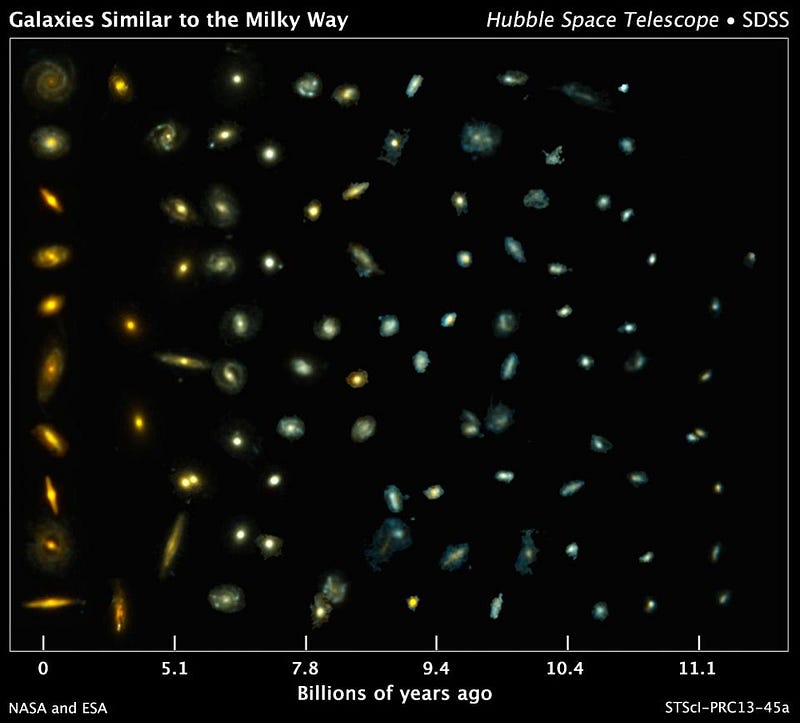
Galaxies in the past were different than the galaxies we see today. In detail, the farther back we look in time, we see galaxies that are:
- Younger, as evidenced by an increase in young stars,
- Bluer, since the bluest stars die the fastest,
- Smaller, because galaxies merge together and attract more matter over time, and
- Less spiral-like, because we are only seeing the brightest parts of the most active, star-forming galaxies.
While the galaxies are intrinsically bluer, if we look at them through our optical telescopes, they actually appear redder, and this is a real effect.
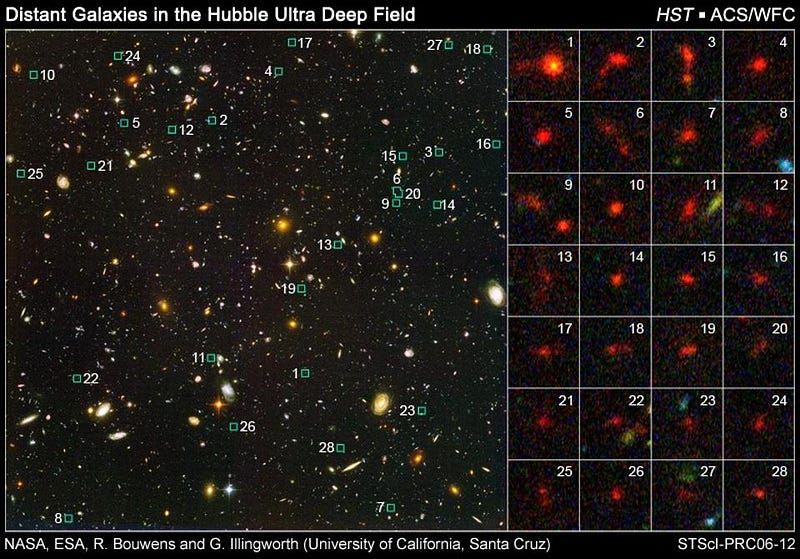
Because the Universe is expanding, the light from distant galaxies — though very blue (and even ultraviolet) when created — gets stretched by the fabric of spacetime. As the wavelength of light stretches, it becomes redder, less energetic and more difficult to see. Yet as we build telescopes, particularly in space, capable of seeing into the infrared portion of the spectrum, more information about these galaxies gets revealed. The best data comes from combinations of the Hubble and Spitzer Space Telescopes, and can tell us what happens throughout the Universe’s history.
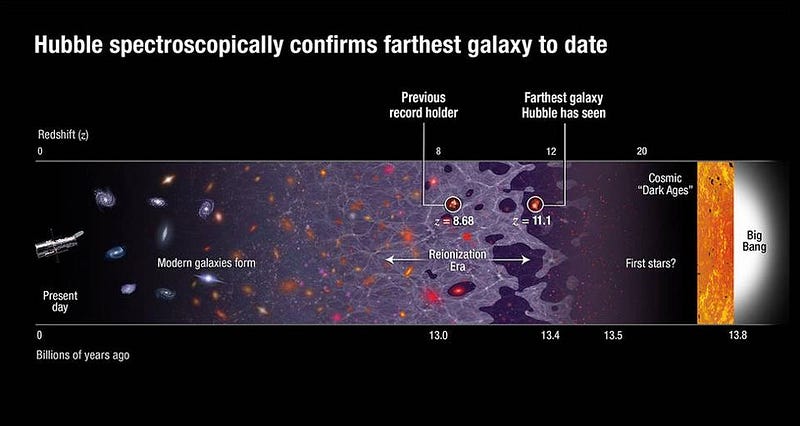
As we look farther back in time, we find that younger galaxies formed stars at faster rates than galaxies do today. We can measure the star-formation rate, and find that at earlier and earlier times, it was more intense. But then we find it hits a peak when the Universe is about two billion years old. Go younger than that, and the rate goes down again.
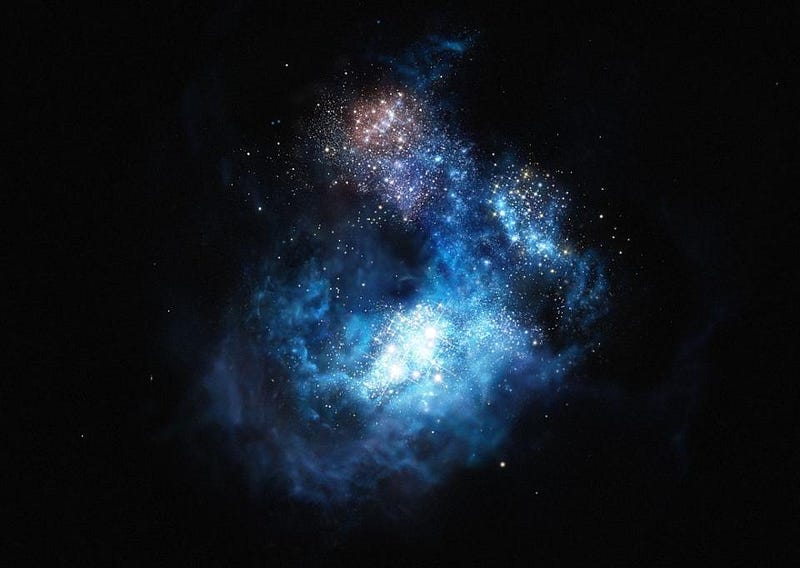
We know the Universe must have been born with no stars or galaxies, and there must have been a “first star” and a “first galaxy” somewhere back in time. We can’t see it yet; Hubble and Spitzer aren’t powerful enough to do so. But if we look as far back as we can see, here’s what we find, going backwards:
- Earlier than 2 billion years of age, the star formation rate falls at a steady rate.
- Prior to 600 million years (0.6 billion years), the star formation rate fell off even faster; there was a very rapid growth during those critical few hundreds-of-millions of years.
- The youngest galaxy we’ve ever seen so far, Gz-11, comes from when the Universe was 400 million years old. There were stars and galaxies before that.
- And all the way back when the Universe was 380,000 years of age, there were definitely no stars or galaxies, and that was the milestone where stable, neutral atoms formed for the first time.
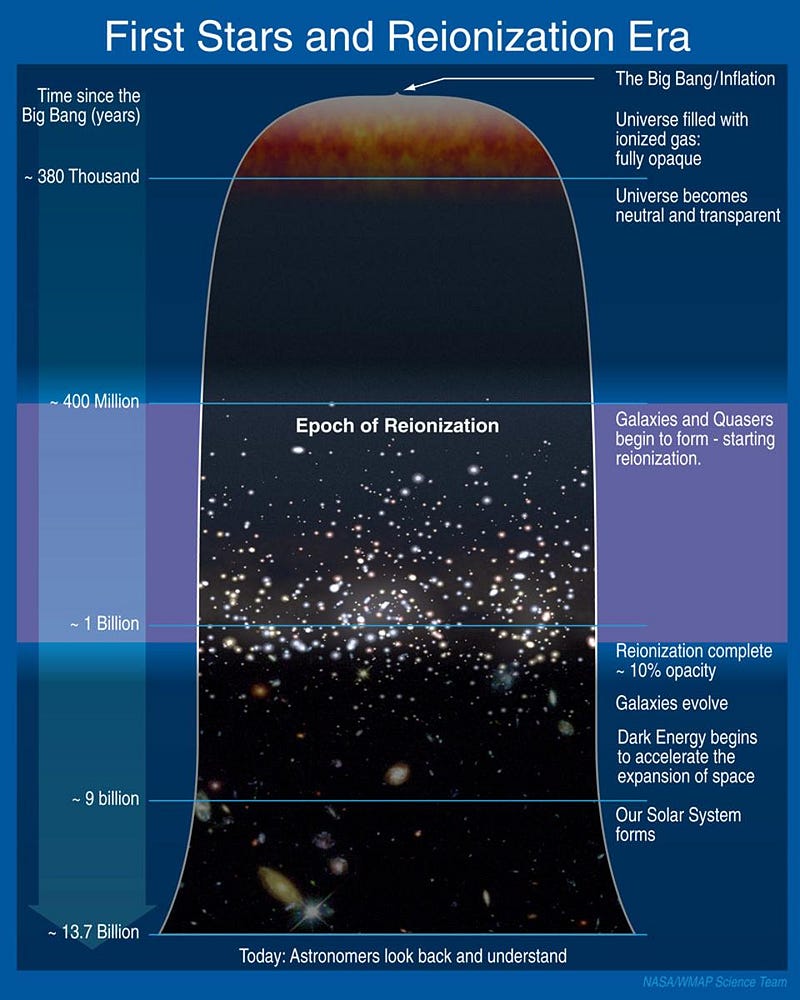
But there’s an interesting conundrum when the Universe is first filled with neutral atoms: those atoms absorb visible light. This means that the Universe wasn’t transparent, like it is today, but is opaque. When the first stars form, we can’t see their starlight the same way we see starlight today. Instead, we need to do two things:
- We need to look for signals of reionization, which is where the ultraviolet radiation from the first stars and galaxies kick electrons off of those atoms, making the Universe transparent to starlight.
- And we need to look in the longer-wavelength portion of the electromagnetic spectrum, as neutral atoms have a harder time absorbing light of longer wavelengths.
If we can make those observations, we’ll know not only how the first stars and galaxies formed, but how they led the Universe to assemble into the giant galactic structures and superstructures we see today.
The star formation data we’ve collected very closely mirrors the reionization measurements we’ve made, which is remarkable. Reionization appears to start when the Universe is about 400–450 million years old, has a big acceleration when the Universe is about 600–650 million years old and is complete by time the Universe is about 900–950 million years old. The intergalactic medium behaves consistently with what we see for galaxies.
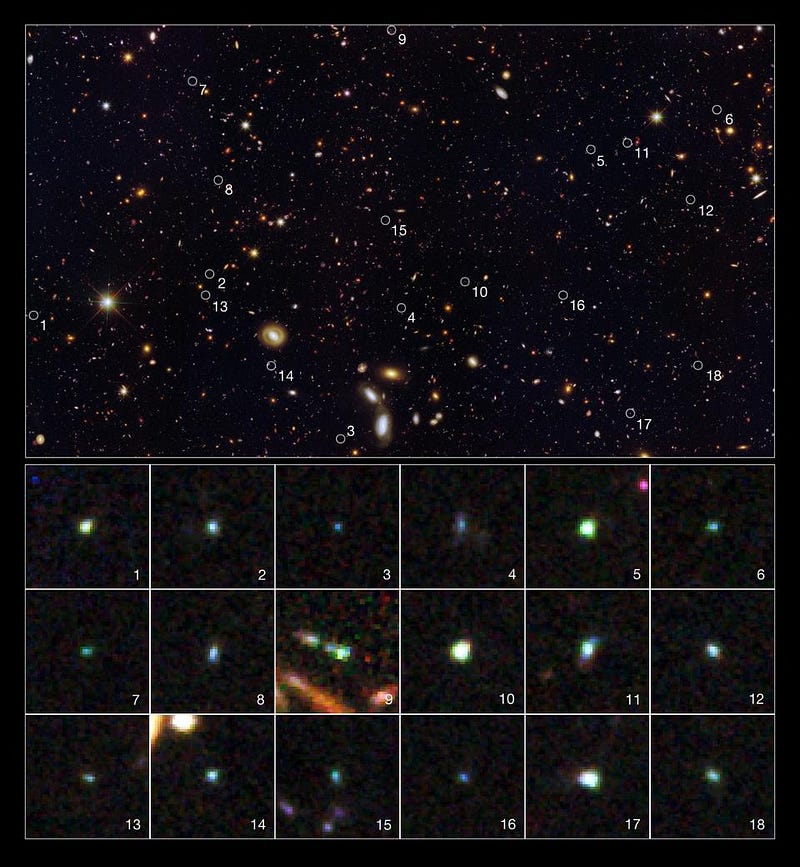
The biggest lesson from all of it is that the galaxies — and in particular the newly star-forming galaxies — are the components of the Universe responsible for reionization. There will be two incredible advances over the next decade that will enable us to understand these earliest stages of starlight in the Universe once and for all: the James Webb Space Telescope and WFIRST.

By looking farther and deeper in the infrared than any telescope before it, James Webb will be able to see galaxies back to when the Universe was only 250 million years old. This will likely include the first direct observations of pristine stars and tiny galaxies, collections which may be no more than a few star-forming regions merging together. It should be able to prove that it’s galaxies, not isolated star formation, are responsible for reionizing the Universe.
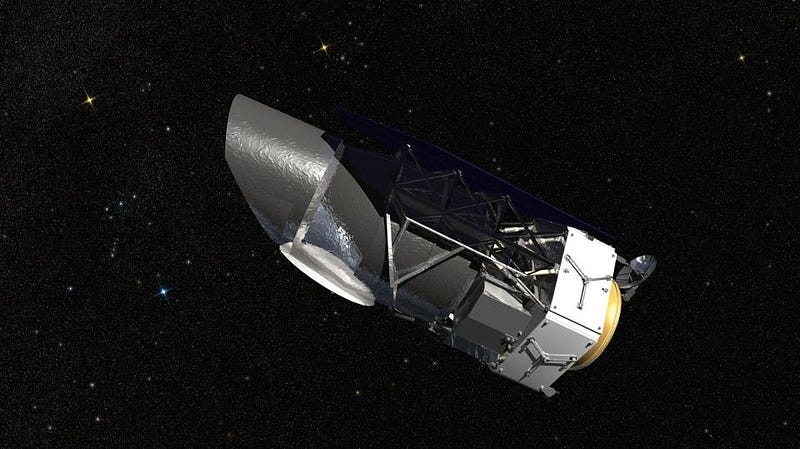
But if the first galaxies form even earlier than that, James Webb will run into limitations, and all we’ll be able to do is make inferences for the truly first sources of stellar light. Another huge advance will come from WFIRST, NASA’s true successor to Hubble, launching in 2024. WFIRST will have the same capability of seeing deep into the visible and near-infrared portion of the spectrum, but with one hundred times the field-of-view of Hubble. With WFIRST, we should be able to measure star formation and reionization over the entire Universe. At last’ we’re finally learning how the Universe went from no stars or galaxies to the very first ones and evolved into the rich, beautiful but ultra-distant Universe we inhabit today!
This post first appeared at Forbes, and is brought to you ad-free by our Patreon supporters. Comment on our forum, & buy our first book: Beyond The Galaxy!





